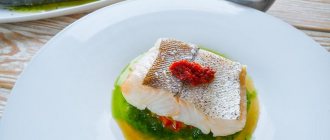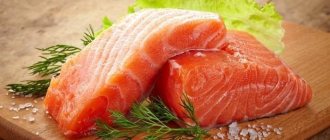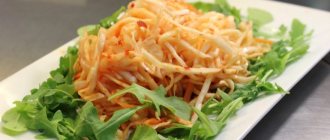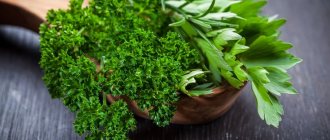The history of pumpkin soup
The classic recipe will be relevant for those who want to cook something special for their loved ones and friends. Mexican pumpkin has been grown in South American lands for 5 thousand years. Historians have found evidence that this vegetable, beneficial in its properties, began to be added to food long before the appearance of cereals.
Indian tribes used the ripe, bright pulp for food, and made dishes from the peel. People in ancient times often cooked pumpkin, as it was widespread everywhere. The benefits of aromatic pumpkin cream soup are high, because this vegetable is rich in valuable vitamins and minerals.
Wild pumpkin varieties were found in 1926 in North Africa. Vavilov's expedition made this important world discovery. Pumpkin first appeared on Russian lands in the 16th century. Due to its unpretentiousness, it took root well and began to produce large harvests. Climatic conditions in Russia and the CIS countries allow the vegetable to be grown in almost all regions. This melon crop has taken root well in Canada, Asia, Russia, Europe and the Mediterranean.
For a long time, pumpkin was prepared in one way - baked, while preserving all the vitamins and beneficial properties of the vegetable. When the first cooking utensils appeared, they began to make soup from the vegetable. The French “casse” appeared in Russia in the 18th century. Each country used its own spices and additional ingredients to highlight the taste and aroma of pumpkin.
Pumpkin puree soup recipe. Calorie, chemical composition and nutritional value.
Nutritional value and chemical composition of “Pumpkin puree soup”.
The table shows the nutritional content (calories, proteins, fats, carbohydrates, vitamins and minerals) per 100 grams of edible portion.
| Nutrient | Quantity | Norm** | % of the norm in 100 g | % of the norm in 100 kcal | 100% normal |
| Calorie content | 23.2 kcal | 1684 kcal | 1.4% | 6% | 7259 g |
| Squirrels | 0.9 g | 76 g | 1.2% | 5.2% | 8444 g |
| Fats | 0.3 g | 56 g | 0.5% | 2.2% | 18667 |
| Carbohydrates | 4.2 g | 219 g | 1.9% | 8.2% | 5214 g |
| Alimentary fiber | 1.1 g | 20 g | 5.5% | 23.7% | 1818 |
| Water | 92.9 g | 2273 g | 4.1% | 17.7% | 2447 g |
| Ash | 0.291 g | ~ | |||
| Vitamins | |||||
| Vitamin A, RE | 87.2 mcg | 900 mcg | 9.7% | 41.8% | 1032 g |
| beta carotene | 0.552 mg | 5 mg | 11% | 47.4% | 906 g |
| Vitamin B1, thiamine | 0.036 mg | 1.5 mg | 2.4% | 10.3% | 4167 g |
| Vitamin B2, riboflavin | 0.025 mg | 1.8 mg | 1.4% | 6% | 7200 g |
| Vitamin B4, choline | 7.26 mg | 500 mg | 1.5% | 6.5% | 6887 g |
| Vitamin B5, pantothenic | 0.174 mg | 5 mg | 3.5% | 15.1% | 2874 g |
| Vitamin B6, pyridoxine | 0.053 mg | 2 mg | 2.7% | 11.6% | 3774 g |
| Vitamin B9, folates | 4.962 mcg | 400 mcg | 1.2% | 5.2% | 8061 g |
| Vitamin C, ascorbic acid | 1.38 mg | 90 mg | 1.5% | 6.5% | 6522 g |
| Vitamin E, alpha tocopherol, TE | 0.229 mg | 15 mg | 1.5% | 6.5% | 6550 g |
| Vitamin H, biotin | 1.042 mcg | 50 mcg | 2.1% | 9.1% | 4798 g |
| Vitamin K, phylloquinone | 5.3 mcg | 120 mcg | 4.4% | 19% | 2264 g |
| Vitamin RR, NE | 0.4121 mg | 20 mg | 2.1% | 9.1% | 4853 g |
| Niacin | 0.209 mg | ~ | |||
| Macronutrients | |||||
| Potassium, K | 94.49 mg | 2500 mg | 3.8% | 16.4% | 2646 g |
| Calcium, Ca | 14.49 mg | 1000 mg | 1.4% | 6% | 6901 g |
| Silicon, Si | 8.714 mg | 30 mg | 29% | 125% | 344 g |
| Magnesium, Mg | 11.02 mg | 400 mg | 2.8% | 12.1% | 3630 g |
| Sodium, Na | 6.16 mg | 1300 mg | 0.5% | 2.2% | 21104 g |
| Sera, S | 10.34 mg | 1000 mg | 1% | 4.3% | 9671 g |
| Phosphorus, Ph | 24.6 mg | 800 mg | 3.1% | 13.4% | 3252 g |
| Chlorine, Cl | 10.67 mg | 2300 mg | 0.5% | 2.2% | 21556 g |
| Microelements | |||||
| Aluminium, Al | 43.5 mcg | ~ | |||
| Bor, B | 3.7 mcg | ~ | |||
| Vanadium, V | 20.32 mcg | ~ | |||
| Iron, Fe | 0.326 mg | 18 mg | 1.8% | 7.8% | 5521 g |
| Yod, I | 0.43 mcg | 150 mcg | 0.3% | 1.3% | 34884 g |
| Cobalt, Co | 0.676 mcg | 10 mcg | 6.8% | 29.3% | 1479 g |
| Lithium, Li | 0.038 mcg | ~ | |||
| Manganese, Mn | 0.2349 mg | 2 mg | 11.7% | 50.4% | 851 g |
| Copper, Cu | 98.7 mcg | 1000 mcg | 9.9% | 42.7% | 1013 g |
| Molybdenum, Mo | 2.776 mcg | 70 mcg | 4% | 17.2% | 2522 g |
| Nickel, Ni | 3.19 mcg | ~ | |||
| Rubidium, Rb | 15.6 mcg | ~ | |||
| Selenium, Se | 1.294 mcg | 55 mcg | 2.4% | 10.3% | 4250 g |
| Strontium, Sr | 0.04 mcg | ~ | |||
| Fluorine, F | 39.08 mcg | 4000 mcg | 1% | 4.3% | 10235 g |
| Chromium, Cr | 0.46 mcg | 50 mcg | 0.9% | 3.9% | 10870 g |
| Zinc, Zn | 0.2176 mg | 12 mg | 1.8% | 7.8% | 5515 g |
| Digestible carbohydrates | |||||
| Starch and dextrins | 2.674 g | ~ | |||
| Mono- and disaccharides (sugars) | 1.6 g | max 100 g | |||
| Galactose | 0.004 g | ~ | |||
| Glucose (dextrose) | 0.982 g | ~ | |||
| Lactose | 0.002 g | ~ | |||
| Maltose | 0.006 g | ~ | |||
| Sucrose | 0.206 g | ~ | |||
| Fructose | 0.341 g | ~ | |||
| Essential amino acids | |||||
| Arginine* | 0.032 g | ~ | |||
| Valin | 0.024 g | ~ | |||
| Histidine* | 0.011 g | ~ | |||
| Isoleucine | 0.02 g | ~ | |||
| Leucine | 0.035 g | ~ | |||
| Lysine | 0.021 g | ~ | |||
| Methionine | 0.007 g | ~ | |||
| Methionine + Cysteine | 0.018 g | ~ | |||
| Threonine | 0.018 g | ~ | |||
| Tryptophan | 0.009 g | ~ | |||
| Phenylalanine | 0.025 g | ~ | |||
| Phenylalanine+Tyrosine | 0.046 g | ~ | |||
| Nonessential amino acids | |||||
| Alanin | 0.03 g | ~ | |||
| Aspartic acid | 0.044 g | ~ | |||
| Glycine | 0.028 g | ~ | |||
| Glutamic acid | 0.142 g | ~ | |||
| Proline | 0.031 g | ~ | |||
| Serin | 0.03 g | ~ | |||
| Tyrosine | 0.021 g | ~ | |||
| Cysteine | 0.012 g | ~ | |||
| Saturated fatty acids | |||||
| Saturated fatty acids | 0.1 g | max 18.7 g | |||
| 16:0 Palmitinaya | 0.042 g | ~ | |||
| 18:0 Stearic | 0.001 g | ~ | |||
| Monounsaturated fatty acids | 0.09 g | min 16.8 g | 0.5% | 2.2% | |
| 16:1 Palmitoleic | 0.001 g | ~ | |||
| 18:1 Oleic (omega-9) | 0.09 g | ~ | |||
| Polyunsaturated fatty acids | 0.111 g | from 11.2 to 20.6 g | 1% | 4.3% | |
| 18:2 Linolevaya | 0.106 g | ~ | |||
| 18:3 Linolenic | 0.006 g | ~ | |||
| Omega-6 fatty acids | 0.1 g | from 4.7 to 16.8 g | 2.1% | 9.1% |
The energy value of pumpkin puree soup is 23.2 kcal.
** This table shows the average levels of vitamins and minerals for an adult. If you want to know the norms taking into account your gender, age and other factors, then use the “My Healthy Diet” application.
Types of pumpkin soup
pumpkin soup, types of pumpkin soup,
There are many variations of this dish with the addition of various additional ingredients.
The most popular types of pumpkin cream soup:
• meat with smoked meats;
• cheese;
• mushroom;
• with mussels and shrimp;
• with cracklings.
The Vietnamese make a unique healthy version by adding coconut milk and green curry paste. In Uzbekistan, it is customary to cook pumpkin soup with milk. Portuguese soup is traditionally served with egg. In Mexico, bell pepper and coriander. In Britain, pumpkin soup is supplemented with leeks and hot garlic. French restaurants are famous for their creamy parmesan soup.
History of the dish
The history of cooking pumpkin dishes goes back about 6 thousand years.
The origin of this melon culture is attributed to South America, because it was there that an ancient drinking bowl called calabaza, made from legenaria, a representative of the genus of pumpkin plants, was found. Then manuscripts were discovered testifying to the food pumpkin, which became the ancestor of modern varieties. From the same ancient sources it became known that pumpkin quickly spread throughout the world and soon took root well on almost all continents. However, previously pumpkin fruits were prepared only baked, and only after the invention of saucepans did the menu diversify with soups. The first recipe for pumpkin soup appeared in France (in which, in fact, the casserole was invented).
Pumpkin itself does not have a strong taste, but different peoples revealed it with the help of their traditional spices and auxiliary products, which ultimately led to the emergence of many different recipes, sometimes completely different from each other in the ingredients.
Thus, today Vietnamese restaurants prepare pumpkin soup with green curry paste and coconut milk, and Uzbek chefs will definitely feed the guest a dish called shirkavak (a type of pumpkin soup with milk and rice). The Japanese cannot imagine this first without seafood, and in France they cook pureed pumpkin soup with cream and grated cheese.
Health benefits of pumpkin soup
The benefits of eating ripe pumpkin cream soup are high, because this vegetable is rich in mineral components and vitamins. Pumpkin is saturated with beta carotene, vitamins B1, B2, C, E, PP. Among the valuable substances in the composition one can note the presence of potassium, calcium and iron.
Nutritionists recommend consuming pumpkin soup for people with heart disease, liver and kidney diseases. Frequent consumption of pumpkin helps improve vision, strengthen blood vessels, and calm the nervous system. The benefits of adding pumpkin puree soup to your weekly diet don’t end there. Pumpkin dish has valuable properties for strengthening the immune system, helping to speed up metabolism and even lose weight.
Contents of the BZHU
A 100 g serving of pumpkin puree soup prepared according to a standard recipe contains: 2.1 g of proteins, 2.7 g of fat, 5.6 g of carbohydrates.
According to research by experts in the field of healthy nutrition, the BJU ratio of 1:1:4 is considered ideal for an adult.
In 100 g of such puree soup this ratio is 1:1.3:2.7.
The contribution of BJU soup to calorie content is equal to the following indicators:
- The body gets 15% of calories from proteins;
- 44% from fat;
- 41% from carbohydrates.
At the same time, the normal indicators are within the following limits: the body should receive 10-12% of calories from proteins, 30% from fats, 58-60% from carbohydrates.
Is pumpkin soup good for pregnant and lactating women?
calories in pumpkin soup, pumpkin soup for nursing
Expectant mothers should eat a balanced healthy diet such as vegetables and fruits. The benefits of aromatic pumpkin cream soup for the human body are high because this vegetable, when consumed frequently, helps regulate the functioning of the gastrointestinal tract and kidneys, and quickly remove excess fluid during edema. In the third trimester, it is important to eat puree soup to speed up metabolism.
Harm
The use of pumpkin for food may have contraindications for people experiencing certain health problems. Food intolerances and stomach illness may be aggravated by consuming this product.
You should use it with caution in your diet in the following cases:
- Unprocessed pumpkin juice is considered quite aggressive for the gastrointestinal tract. Abuse of it can worsen the situation with stomach problems and exacerbation of gastritis.
- Low stomach acidity is also a contraindication; an alkaline product can worsen your health.
- Roasted pumpkin seeds can lead to salt deposits in the joints.
- The calorie content of pumpkin soup increases several times if you add a lot of cream, butter and other fatty foods. This will have an unpleasant effect on your figure. Also, roasted pumpkin seeds can interfere with slimming.
- The use of vegetables in your diet is contraindicated in severe diabetes mellitus.
Pumpkin soup for weight loss
By replacing your usual dinner of fatty delicacies with pumpkin soup, you can lose several kilograms in 1 month. This vegetable is rich in beneficial properties and vitamins (the right sugars), which help not to gain weight. Pumpkin puree soup is suitable for those who love sweets and eat a lot before bed.
Thanks to its pleasant taste, this dish will appeal to those who want to lose weight. The harm from soup is minimal if you eat it alternating with other dietary dishes. It is important to note that creamy pumpkin soup can be eaten after 18:00 in the evening due to the low calorie content of the vegetable. A diet based on low-calorie pumpkin cream soup will soon give good results - safe weight loss.
Which pumpkin to choose for cream soup?
Pumpkin is chosen based on taste preferences. The larger the fruit, the less sugar it contains. The most commonly used for puree soup is butternut squash. It is distinguished by dense pulp, sweetish taste, and thin skin. The shelf life of the fruit is 9 months.
If storage rules are followed, pumpkin can be stored for up to 2 years. But over time, its beneficial properties decrease. Therefore, you should choose young fruits.
Best pumpkin variety for pumpkin soup
The taste of pumpkin soup depends directly on the type of pumpkin used for its preparation. Through trial and error, sooner or later you can find the best pumpkin for your soup. It’s easy to skip the experimentation stage by immediately choosing a vegetable of the “Miracle Yudo” variety for the soup.
This variety of pumpkin has an elongated shape with bright orange flesh. It is covered with a dark green skin with spots randomly scattered over the entire surface. Pumpkin belongs to the group of nutmeg varieties, but when grown in the middle zone it is not particularly sweet. The vegetable gives the soup a special nutmeg taste and an unusually bright color.
A medium sized pumpkin is enough to make a pot of soup. A large vegetable can be divided into two halves. Cut up pumpkin will keep well in the refrigerator.
In addition to preparing the first dish, the “Miracle-Yudo” variety, due to its juicy pulp, is suitable for making juice. In addition, this variety of pumpkin makes delicious candied fruits.
The variety has an average ripening period, which is about 120 days from the moment of germination. It is easy to speed up the ripening process by growing vegetables in seedlings.
The vegetable is characterized by high yield and resistance to various diseases. The variety is suitable for long-term storage. For cultivation, well-fertilized soil is recommended, in the sunniest place, protected from cold winds.
The bush of this pumpkin is spreading, the vines grow up to 5 meters long. For this reason, there is no need to plant plants too densely. When grown by seedlings, it is possible to collect the maximum harvest from each bush.
Pumpkin “detox”
“Detox” has recently become a newfangled term in the world of those wishing to lose excess weight. The point of this way to lose weight is to drink exclusively fresh juices for several days. Internet users leave more and more positive reviews every day about this method of burning calories.
The magazine "Chasnosti.Com" recommends paying attention to how many calories are in pumpkin juice, because there are about 38 kcal. Armed with a juicer and slices of fresh pumpkin, you can begin a juice diet, which, in addition to weight loss, guarantees an increase in immunity and a positive effect on the body
A cocktail of several fresh juices will be a pleasant experiment for health. Apple, carrot, orange and others go well with pumpkin juice.
How to make pumpkin soup
how to cook pumpkin soup
This healthy dish can be quickly prepared without spending a lot of time and effort. Due to its properties, pumpkin lends itself perfectly to cooking and grinding in a blender. To preserve all the beneficial properties of this bright aromatic crop you need:
1. Peel the root vegetable and remove the seeds from it. Cut into cubes as desired.
2. Add a little oil and pumpkin to a deep saucepan and lightly fry the vegetable. Then add salt and pepper.
3. The vegetable is filled with water. After the pumpkin boils, it is cooked for an additional 10 minutes.
4. Then beat the soup using a blender and simmer for a couple more minutes over medium heat.
Important! It is recommended to add any additional ingredients as desired to the pumpkin puree soup, such as cream, hard cheese, herbs or cooked meat.
The above tips will help you prepare the right pumpkin soup, which will benefit the body. In the future, you can experiment and add smoked meats, crackers, seafood and spices to the dish.
Pumpkin soup for weight loss
- Cooking time: 40 minutes.
- Number of servings: 8 persons.
- Calorie content of the dish: 40 kcal per 100 g.
You can diversify the pumpkin puree soup by adding sour apples. The combination of sweet pulp and sourness will make the dish more piquant. One serving of soup on the menu will keep you feeling full for a long time and will not let a person get hungry. This dish is also considered healthy because pumpkin is rich in vitamins and minerals. If desired, you can add a little low-fat cream at the end of cooking to soften the taste.
Ingredients:
- raw pumpkin pulp – 900 g;
- apples – 2 pcs.;
- vegetable oil – 30 ml;
- vegetable broth - half a liter;
- onion – 1 pc.;
- water – 500 ml.
Cooking method:
- Heat the oil in a saucepan and cook the chopped onion until soft.
- When the contents of the pan become transparent, add pieces of cored and peeled apples and pieces of pumpkin.
- Pour in broth, water, and season with bay leaf.
- Let it boil, simmer over low heat for 25 minutes.
- Grind the vegetables with a mixer or blender and return them to the broth.
- Keep on low heat, stirring regularly, but do not let it boil.
- Garnish the soup in a bowl with seeds, pour in a little cream.
- If you want to make a sweet dish, remove the onion from the recipe and add honey or berry sauce.
Classic recipe with cream
pumpkin soup with cream
The preparation time for this dish is approximately 40 minutes. The following list of products will make 3 servings. The soup retains its beneficial properties and vitamins.
You will need:
700 g pumpkin pulp;
300 g new potatoes;
2 heads of red sweet onion;
How is it useful for losing weight?
Pumpkin is not only allowed, but also recommended for inclusion in the diet menu. Due to the high content of dietary fiber, fiber, and low calorie content, puree soup will help remove waste, toxins, reduce appetite, and normalize metabolism.
At the beginning of the 20th century, scientists discovered the ability of pumpkin to speed up the process of utilization of fats supplied with a dish and activate the consumption of existing reserves. The special substance kartinin present in the pulp is responsible for this function.
When losing weight, it is recommended to follow the following requirements for preparing soup:
- the broth should not be fatty and rich; lean meat or vegetable broth is preferable;
- sugar, hot spices should be absent;
- celery, ginger, and fennel are often used as additional ingredients (in addition to standard onions, carrots, and zucchini);
- The dish should be supplemented with a small portion of cream, sour cream or butter for better absorption of vitamin A.
Pumpkin Cheese Soup Recipe
pumpkin soup with cheese and croutons
To prepare three servings of soup, you need to use:
- pumpkin (or part thereof) weighing 500 grams;
- 4 medium potatoes;
- a head of white onion;
- 50 grams of butter;
- a couple of garlic cloves.
The technology for cooking pumpkin puree soup involves two ways to prepare pumpkin. Vegetable pieces need to be baked in the oven. However, some reputable chefs do not peel the vegetable.
Instead of baking the pumpkin pieces, you can cook them in a saucepan.
Preparation procedure:
- The pumpkin needs to be cut into small cubes and boiled in water with a bay leaf for at least 10 minutes.
- Add small potato cubes to the pan. Bring to a boil, cook for at least 10 minutes.
- To make the pumpkin soup even more beneficial, you need to add garlic and onion to it. You can use a blender for grinding.
- To give the soup a special taste, the garlic and onion mass must be fried with the addition of pepper, butter and spices (if desired).
- Transfer the mixture into a saucepan. Turn off once the soup begins to boil.
- The soup must be beaten with a blender or chopped vegetables in it using a masher.
- Then cut the processed cheese into small cubes and place it in the pan.
- After the pieces of cheese melt in the hot mixture, the dish is ready. It just needs to be stirred.
Baked pumpkin – a triumph of taste and benefits
Simmering in the oven is the most popular way to cook pumpkin. Its history dates back to the time of the first settlers in America. The newly arrived residents skillfully practiced their culinary skills: they cut off the tops of pumpkin fruits and baked them with milk and honey. This dish has become a favorite delicacy of children and adults.
If you calculate how many calories are in baked pumpkin, it will be 23 kcal. An ideal option for the basis of dietary dishes. If you sweeten the vegetable, then the question “How many calories are in baked pumpkin with sugar” will have to be answered a little more pessimistically - “37 kcal.” But such indicators are also very attractive for those who are trying to lose weight.
A simple and incredibly tasty recipe for combining pumpkin and apples is very popular on culinary Internet portals. There is nothing complicated in the preparation process: you need to prepare vegetables and fruits and bake them in the oven. If you deprive such a dish of any additives (sugar, honey, spices), then it will be very pleasant to calculate how many calories are in baked pumpkin with apples. After all, it’s only 48 kcal!
Pumpkin soup with mushrooms recipe
pumpkin soup with mushrooms
When planning to cook this puree soup, you need to prepare:
- small pumpkin;
- 5 medium-sized potatoes;
- a head of white onion;
- carrots;
- 250 grams of mushrooms (white or champignons);
- bell pepper (1-2 pieces);
- salt and ground black pepper;
- bay tree leaf.
The quantities of all ingredients are indicated for a four-liter pan.
Preparation procedure:
- Mushrooms need to be washed, cut and fried.
- Peel the pumpkin, cut into small cubes, add water so that it slightly covers the cubes. The volume should be approximately two-thirds of the pan. You need to cook for at least 10 minutes. The pieces should be easy to knead with a spoon.
- Peel cooked vegetables. Chop the potatoes and place them in a saucepan, adding a little water if necessary.
- Chop the onion very finely, grate the carrots on a fine grater, add to the pan. Vegetables will increase the benefits of pumpkin soup.
- Chop the bell pepper into small strips.
- Grind the vegetables until pureed. You can use a regular puree masher or blender for this.
- Add bell peppers and stored mushrooms to the dish.
- Pepper and salt.
- It is necessary to stir on the fire for about 7 minutes.
- Add bay leaf.
After the pumpkin soup is cooked, you need to keep it covered for 20 minutes. This will give the soup a richer taste and aroma. If desired, you can add chopped herbs. The calorie content of pumpkin soup will be small - about 150 calories.
Cons of vegetables
When a baby eats an orange vegetable, allergic manifestations are possible: rash, itching, upset stool. This is due to the fact that the fruit is brightly colored. Before giving your baby a full portion of a new dish, make sure that your little one tolerates the product well. Eating the fruit is prohibited if the baby is diagnosed with the following diseases:
- gastritis;
- diabetes;
- stomach or duodenal ulcer.
When an infant suffers from constipation, pumpkin puree combined with an apple or carrot will have a wonderful laxative effect. In cases where children have too loose stools, it is necessary to select dishes that will strengthen it. The best solution would be rice porridge with pumpkin additive.
Recipe for pumpkin soup with mussels
pumpkin soup with mussels
To prepare 4 servings you need to take:
- pumpkin (or part thereof) weighing 700 grams;
- 1 kg fresh mussels (in shells);
- large lemon;
- dry white wine 300 grams;
- a tablespoon of olive oil;
- Bay leaf;
- a head of white onion;
- garlic clove;
- vegetable broth 900 grams;
- salt and ground black pepper;
- dill.
Preparation procedure:
- Sort the mussels, peel them, place them in a saucepan and pour dry wine. It is important to note that damaged and open shells are unsuitable for cooking.
- Remove the lemon zest and cover the mussels with it. Squeeze lemon juice there and put on fire. Add bay leaf. After boiling, simmer for 5 minutes, shaking occasionally. The shells should open.
- After cooking, transfer the mussels to a sieve (without lemon or bay leaf). Leave the pan with the broth and discard any unopened shells.
- After the mussels have cooled, you need to remove the meat. The broth must be carefully strained; it is recommended to use gauze folded in several layers.
- Heat vegetable oil in a large saucepan, add chopped garlic and onion mixture. Cook for about 5 minutes. It is necessary to stir constantly.
- Peel the pumpkin, cut into small cubes, place in a saucepan. Pour in the broth in which the mussels were cooked and simmer, covered, for about 7 minutes.
- Then pour the pre-cooked vegetable broth into the pan. Cook the soup for about half an hour.
- Then you need to grind the dish until smooth.
- Season with pepper and salt and place the mussel meat into the pan. Bring the dish to a boil and turn off the stove.
The finished pumpkin soup can be decorated with lemon slices or sprinkled with finely chopped fresh dill.
And a little about secrets.
The story of one of our readers Alina R.:
I was especially depressed about my weight. I gained a lot, after pregnancy I weighed as much as 3 sumo wrestlers together, namely 92 kg with a height of 165. I thought the belly would go away after giving birth, but no, on the contrary, I began to gain weight. How to cope with hormonal changes and obesity? But nothing disfigures or makes a person look younger than his figure. At the age of 20, I first learned that plump girls are called “WOMAN” and that “they don’t make clothes that size.” Then at the age of 29, divorce from my husband and depression.
But what can you do to lose weight? Laser liposuction surgery? I found out - no less than 5 thousand dollars. Hardware procedures - LPG massage, cavitation, RF lifting, myostimulation? A little more affordable - the course costs from 80 thousand rubles with a nutritionist consultant. You can, of course, try to run on a treadmill until you go crazy.
And when will you find time for all this? And it's still very expensive. Especially now. Therefore, I chose a different method for myself.
Pumpkin soup with chicken and cream
Compound:
- pumpkin (pulp) – 0.25 kg;
- potatoes – 0.4 kg;
- chicken breast fillet – 0.2 kg;
- onions – 100 g;
- water – 1 l;
- cream – 0.2 l;
- salt, spices - to taste.
- Boil the chicken breast for 20 minutes. Cool, cut and return to broth.
- Peel the vegetables and chop finely. Dip into the broth.
- Cook until all vegetables are soft.
- Using an immersion blender, puree the contents of the pan.
- Add salt, spices and cream.
- Bring the soup to a boil and immediately remove from the heat - if you let the dish simmer, the cream will curdle.
When serving the soup, it doesn’t hurt to sprinkle pumpkin seeds dried in a dry frying pan.











